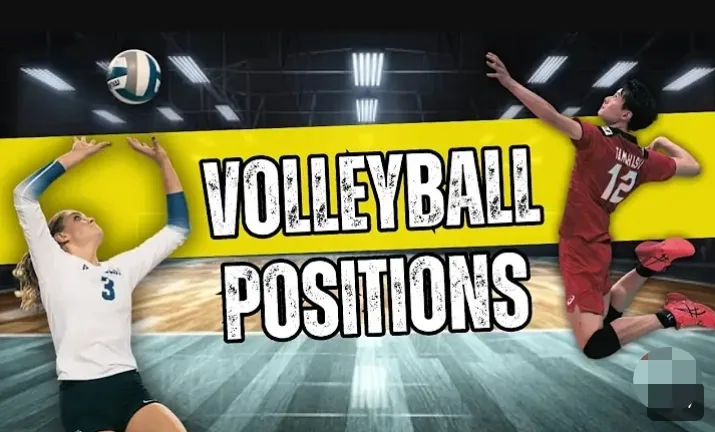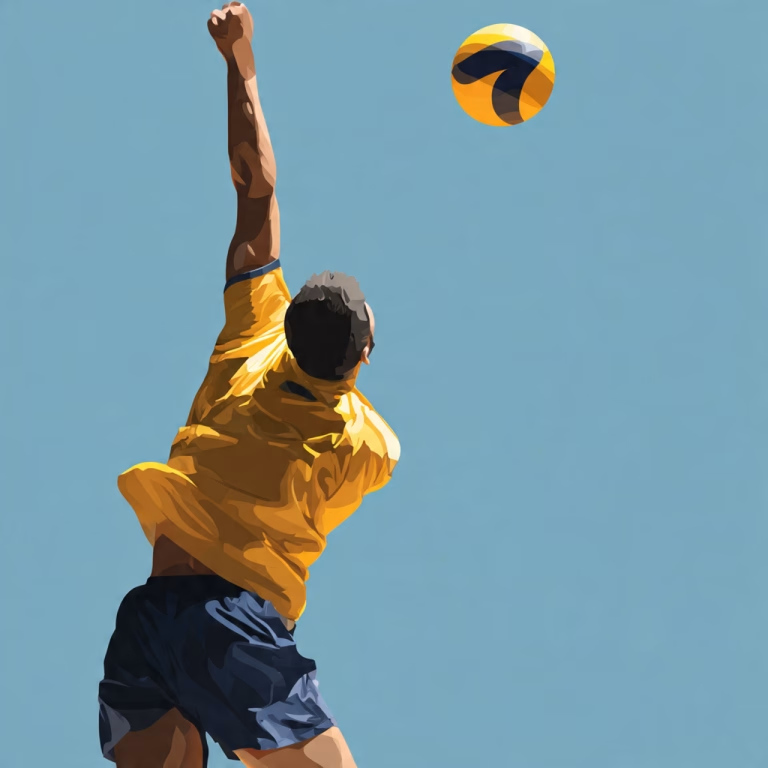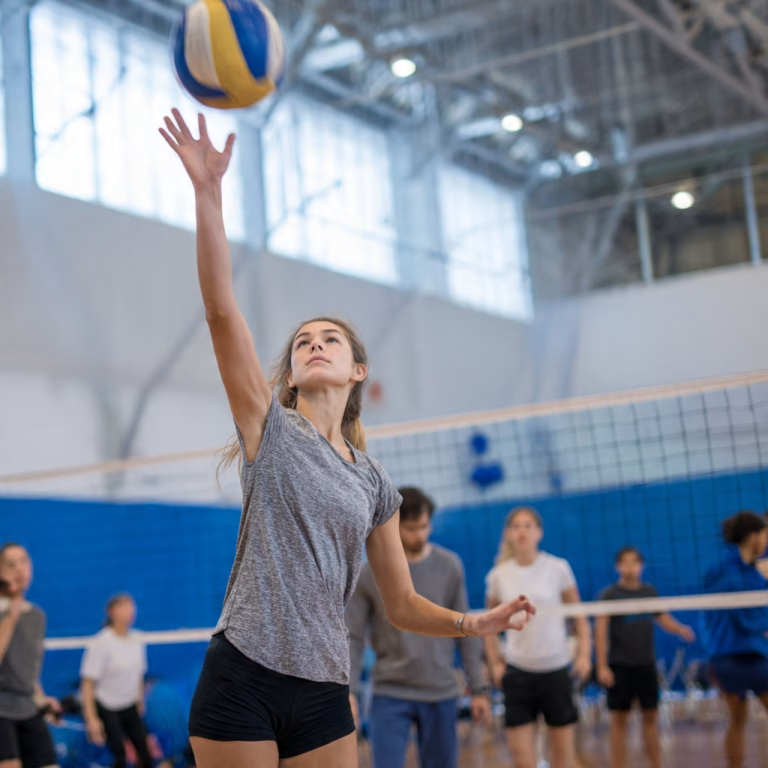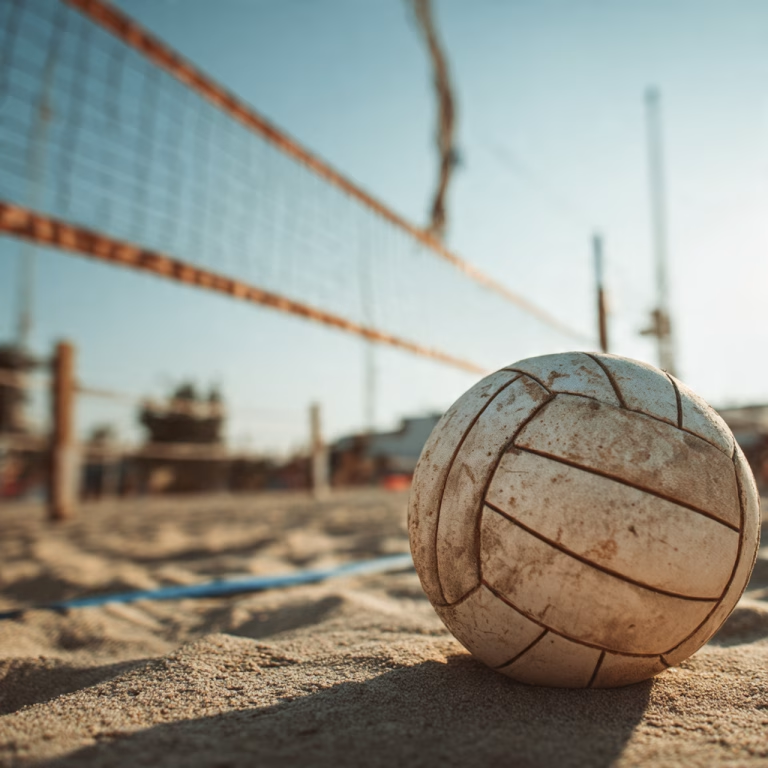Volleyball (VB) is a complex sport with a lot of depth in its strategy. Let us look at volleyball positions, roles, responsibilities, and skill requirements.
Today, in this article, I’m going to break down all the volleyball positions. So, if you’re curious about how a team plays together to make those spectacular saves and smash back-to-back hits, then read till the end.
Volleyball is a dynamic and thrilling sport that requires a well-coordinated team effort. Each player on the court has a specific role and set of responsibilities that contribute to the team’s overall success. Understanding the volleyball positions and the roles associated with each position is crucial for players to excel and work cohesively as a unit.

In this comprehensive article, we’ll look into the detailed volleyball positions diagram, exploring the unique responsibilities and skills required for each role. Whether you’re a seasoned player or just starting your volleyball journey, this guide will provide you with valuable insights to enhance your game and become a more well-rounded team player.
The Volleyball Court and Player Positions
Before we look into the individual positions, let’s first understand the layout of the volleyball court and the basic player positions. A volleyball court is divided into two halves, with a net running across the center. Each team has six players on the court at any given time, with three players positioned in the front row and three in the back row.
The front row players are typically responsible for attacking and blocking, while the back row players focus on receiving serves, setting up attacks, and defending the court.
However, the roles and responsibilities of each player extend beyond these basic duties, and they often rotate positions throughout the game.
See Also:
- Volleyball Bumping Drills for Beginners
- Volleyball Ready Position
- Discover Tips for Setting in Volleyball
- Beach Volleyball vs Indoor Volleyball: Similarities and Differences
Volleyball Positions and Roles
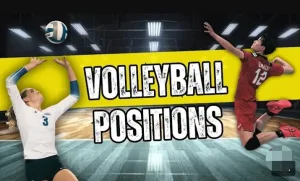
In volleyball, each team has six players divided into the front row and back row. In the front row, there are an outside hitter, a middle blocker, and an opposite hitter. However, in the back row, there are setters, liberos, and defensive specialists. The outside hitter, or left-side hitter, is usually the primary offensive player.
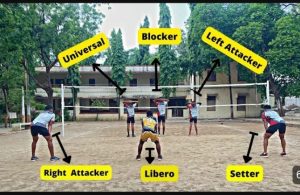
This player attacks from the left side of the net and often receives the majority of sets from the setter.
See Also:
- Middle School Volleyball Rules (2024 Updated)
- Beach Volleyball Rules 2024: Key Differences From Indoor Game
- Grass Volleyball Rules 2024: A Comprehensive Guide for Players
1. Setter Position and role
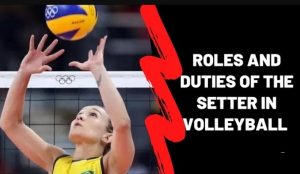
The setter (S) is often referred to as the “quarterback” of the volleyball team. Their primary responsibility is to facilitate the team’s offensive plays by setting up the ball for the attackers. A skilled setter possesses excellent ball-handling skills, court awareness, and the ability to quickly read the game and make strategic decisions.
Key responsibilities of the setter include:
- Receiving the serve or the first pass from the back row players
- Setting up the ball for the attackers in an optimal position for a successful spike
- Communicating with teammates to coordinate offensive plays
- Maintaining a calm and composed demeanor under pressure
2. Outside Hitter Position and roles
The outside hitter (OH) is typically one of the team’s primary offensive players. These players are positioned on the left and right sides of the court and are responsible for executing powerful attacks and scoring points for the team.
Key responsibilities of the outside hitter include:
- Executing a variety of attacking shots, such as spikes, tips, and roll shots
- Providing a strong defensive presence at the net, blocking and digging attacks from the opposing team
- Serving effectively to put pressure on the opposing team’s defense
- Communicating with the setter and other teammates to coordinate offensive plays
3. Middle Blocker Position and roles
The middle blocker (MB) is a crucial defensive player who plays a pivotal role in stopping the opposing team’s attacks. They are positioned in the center of the net and are responsible for blocking and deflecting the opponent’s hits.
Key responsibilities of the middle blocker include:
- Quickly reading the opposing team’s offensive plays and positioning themselves accordingly
- Executing effective blocks and deflections to prevent the opposing team from scoring
- Providing offensive support by attacking and scoring points when the opportunity arises
- Communicating with teammates to coordinate defensive strategies
Read Also: Characteristics of a Libero in Volleyball
4. Libero
The libero (L) is a specialized defensive player who is easily identifiable by their contrasting jersey color. This player is responsible for providing exceptional defensive coverage and ball control for the team.
Key responsibilities of the libero include:
Receiving serves and digging hard-driven attacks from the opposing team
- Providing consistent and accurate passing to the setter
- Communicating with teammates to coordinate defensive positioning and strategies
- Substituting for back row players to enhance the team’s defensive capabilities
5. Opposite Hitter
The opposite hitter (OPP) is positioned diagonally across from the setter and plays a crucial role in the team’s offensive strategy. This player is often considered a secondary attacker and provides additional scoring opportunities for the team.
Key responsibilities of the opposite hitter include:
- Executing powerful attacks from the back row and front row positions
- Providing offensive support by scoring points and putting pressure on the opposing team’s defense
- Assisting in blocking and defensive efforts when necessary
- Communicating with the setter and other teammates to coordinate offensive plays
6. Defensive Specialist (Right Attacker)
The defensive specialist (DS) is a player who specializes in defensive skills and is often substituted into the game to provide additional defensive support for the team.
Key responsibilities of the defensive specialist include:
- Receiving serves and digging hard-driven attacks from the opposing team
- Providing consistent and accurate passing to the setter
- Communicating with teammates to coordinate defensive positioning and strategies
- Substituting for back row players to enhance the team’s defensive capabilities
The above-mentioned positions (vb positions) are the standard six-player volleyball team.
See Also: The 6 Zones in volleyball Explained
7. Serving Specialist
A serving specialist (SS) is a player whose primary role is to serve effectively and consistently during crucial moments of a volleyball match. This position is often filled by a substitute player brought in specifically to execute a high-quality serve, such as a jump serve, float serve, or strategic placement, to disrupt the opponent’s reception and gain an advantage.
Key Responsibilities of a Serving Specialist:
- Delivering Consistent Serves: Ensuring accuracy and precision to challenge the opposing team’s defense.
- Applying Pressure: Using powerful or strategically placed serves to force errors or weak passes.
- Adaptability: Adjusting serving techniques based on the opponent’s weaknesses.
- Short Playing Stints: Typically subbed out after serving, with minimal involvement in other gameplay aspects.
Skills Required for a Serving Specialist:
- Strong serving technique (e.g., jump serve, float serve).
- Mental focus and the ability to perform under pressure.
- Tactical awareness to target vulnerable zones in the opponent’s formation.
Serving specialists play a vital role in creating scoring opportunities and can be game-changers in high-stakes situations.
FAQs
What is the role of the setter in volleyball?
The setter is the player responsible for setting up the ball for the attackers. They receive the serve or the first pass from the back row players and then set the ball in an optimal position for the attackers to execute a successful spike. The setter is often referred to as the “quarterback” of the team, as they facilitate the team’s offensive plays and coordinate with teammates to execute strategic plays.
What is the primary responsibility of the outside hitter?
The primary responsibility of the outside hitter is to execute powerful attacks and score points for the team. They are positioned on the left and right sides of the court and are responsible for executing a variety of attacking shots, such as spikes, tips, and roll shots. Outside hitters also provide a strong defensive presence at the net, blocking and digging attacks from the opposing team.
What is the role of the middle blocker in volleyball?
The middle blocker is a crucial defensive player whose primary role is to stop the opposing team’s attacks. They are positioned in the center of the net and are responsible for blocking and deflecting the opponent’s hits. Middle blockers also provide offensive support by attacking and scoring points when the opportunity arises.
What makes the libero unique in volleyball?
The libero is a specialized defensive player who is easily identifiable by their contrasting jersey color. They are responsible for providing exceptional defensive coverage and ball control for the team. The libero’s primary responsibilities include receiving serves, digging hard-driven attacks, and providing consistent and accurate passing to the setter.
What is the role of the opposite hitter in volleyball?
The opposite hitter is positioned diagonally across from the setter and plays a crucial role in the team’s offensive strategy. They are often considered a secondary attacker and provide additional scoring opportunities for the team. The opposite hitter executes powerful attacks from the back row and front row positions, assists in blocking and defensive efforts, and communicates with the setter and other teammates to coordinate offensive plays.
Final Take (Conclusion)
Volleyball is a team sport that requires a well-coordinated effort from all players on the court. Each position in the volleyball positions diagram has its own unique set of responsibilities and skills that contribute to the team’s overall success. From the setter who orchestrates the offensive plays to the libero who provides exceptional defensive coverage, every player plays a crucial role in the game.
Understanding the roles and responsibilities associated with each position is essential for players to excel and work cohesively as a unit. By mastering the skills required for their respective positions and communicating effectively with teammates, players can elevate their game and contribute to the team’s success.
Whether you’re a seasoned player or just starting your volleyball journey, this comprehensive guide has provided you with valuable insights into the volleyball positions diagram and the roles associated with each position. Embrace your role, hone your skills, and work together as a team to achieve victory on the court.
See Also:
- Volleyball Defense Drills 2024: New Improved
- Volleyball Block Drills 2024 – New Improved
- Volleyball Hitting Drills – 2024 (New Improved)

